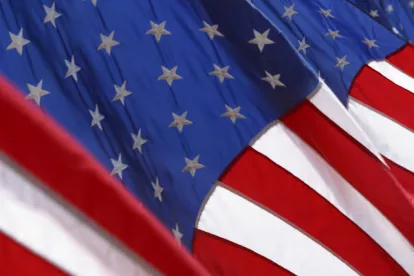On August 6, 2020, President Trump signed the “Executive Order on Ensuring Essential Medicines, Medical Countermeasures, and Critical Inputs Are Made in the United States,” requiring, among other things, the U.S. government to purchase “essential” medicines and medical supplies produced domestically, rather than abroad. Citing a need to reduce U.S. dependence on foreign suppliers, the Order sets forth several new requirements aimed at establishing reliable, long-term domestic production of essential drugs and devices, including their component parts. To be clear, this is a tall order: the Food and Drug Administration (FDA) will need to assemble a list of critical supplies and medicines; agencies will need to assess ways to secure the supply chain for both equipment and medicines; the Environmental Protection Agency (EPA) will need to consider how it can accelerate domestic manufacturing requests; the U.S. Trade Representative (USTR) and the Department of Defense (DOD) will need to re-negotiate the terms of international agreements; the Department of Veterans Affairs (VA) may (or may not) be exempted; and – lest it go without saying – everyone will have to update their regulations. While this “Buy American” requirement seems to take effect as soon as the FDA issues its list of critical materials, the Order may leave intact (at least temporarily) some exceptions, which may allow companies time to examine and adjust their supply chains. Over the longer term, most required agency actions are ordered to be realized within 90-180 days, but the inevitable regulatory updates will lag (far?) behind. For now, we find ourselves in a bit of a Twilight Zone – “the middle ground between light and shadow, between science and superstition, and … between the pit of man’s fears and the summit of his knowledge” – forced to guess which parts of this new Order are real and immediate, and which will leave us stuck in a “darker dimension.”
The Order comes on the heels of the government’s failure to meet the demand for personal protective equipment (PPE) and drugs, like hydroxychloroquine, used as medical countermeasures in the public health response to the COVID-19 pandemic. The Order imposes several separate requirements. Below we have provided a (short?) summary of key provisions and their potential impacts:
Creating “The Lists” – Identifying Vulnerabilities in the Supply Chain
Within 90 days (by November 4, 2020), the FDA is tasked with creating a list of “Essential Medicines” and “Medical Countermeasures” that are deemed “medically necessary to have available at all times in an amount adequate to serve patient needs.” The list must also include “Critical Inputs,” which includes Active Pharmaceutical Ingredients (API), the active ingredient starting materials, and medical device components that the FDA deems “critical.” The DOD separately must create a list of defense-specific essential medicines and countermeasures within 180 days, although it is reasonable to expect that there will be substantial overlap between the FDA’s and the DOD’s lists.
Beyond “The Lists,” the FDA and DOD are also tasked with reviewing the public health supply chain to assess potential vulnerabilities and reliance on foreign sources of supply. Based on the results of these reviews, the Office of Management and Budget (OMB) will recommend additional changes to regulations and laws. But those recommendations are not expected until at least February 2021, if not later.
“Buy American” – Maximizing Domestic Production in Federal Procurements
Perhaps most impactful to the pharmaceutical and medical device industries, the Order imposes a new “Buy American” requirement. It does this in a few different ways – some of which appear to be effective immediately, and some of which will roll out over time.
Immediately (or, perhaps, once the FDA has published The Lists), the Order directs government agencies to make non-competitive awards (sometimes also referred to as “sole-source,” although that may be a bit of a misnomer in this case) “to the maximum extent permitted by law,” allowing the government to purchase drugs and medical supplies “produced in the United States.” There are a few points worth highlighting on this new requirement.
First, the Order requires agencies to divide the non-competitive awards among two or more U.S. manufacturers, but only “as appropriate.” It is unclear whether this means that dual sourcing is required or if dual sourcing is merely preferred. Nonetheless, it makes clear that the White House is not interested in putting all of its eggs in one basket; the priority is strengthening the entire U.S. public health industrial base, and the government will be awarding many, many non-competitive awards to accomplish this objective. Things seem to be looking sunny for U.S. companies.
But then again, maybe not. The Order also sets forth a new two-part test to determine whether something actually is “produced in the United States.” Frustratingly, the definition is both ambiguous (defining a phrase by using the same phrase) and potentially very limiting, giving U.S. manufacturers that rely on a global supply chain limited options to provide a product “produced in the United States.” Here is the two-part definition:
-
The Critical Inputs, which includes the active pharmaceutical ingredients (API), used to produce the “Essential Medicines” or “Medical Countermeasures” must be produced in the United States; and
-
The finished drug or device must be manufactured, prepared, propagated, compounded, or processed in the United States.
The second prong may present a very low bar. After all, the terms “manufactured, prepared, propagated, compounded, or processed” include such basic activities as repackaging or relabeling. See 21 U.S.C. § 360(a)(1). But the first prong requires that the critical inputs or active ingredient must also be produced domestically, and that process seems to encompass far more than merely “preparing” or “processing.” Further, while the Order does not say how much of the active ingredient must be produced domestically, it certainly implies that the answer is all of it. There is no de minimis exception listed, and there is no allowance for supply chains that rely on foreign-made active ingredients. What needs to happen domestically for an active ingredient to be “produced in the United States”? That is a good question, too. Because the phrase uses the same phrase to define itself, we find ourselves in a tautological, infinite, illogical loop. Welcome to the Twilight Zone. It may be safe to assume that when it comes to the active ingredient, “produced” means… well, “produced” – made, created, developed, manufactured – here in the United States of America. Every single step? Every single chemical component? Yeah, maybe.
It may be worth noting that medical drugs and devices already are subject to the Buy American Act (BAA), which prioritizes American-made products unless an exception is available. To qualify as a “domestic end product,” the BAA requires that: (a) the end product be manufactured in the U.S.; and (b) the “cost of its components … manufactured in the United States exceeds 50 percent of the cost of all its components.”[1] FAR 52.225-1. But the Order’s new “produced in the United States” standard (which seems to use the word “produced” deliberately instead of “manufactured”) appears more stringent than the current requirements under the BAA, requiring both that all of the active ingredient and the finished drug product or finished device be produced in the United States. Color us skeptical, but we are not sure that any company can meet this definition without a lengthy, in-depth look at its supply chain and without a serious assessment of its risk tolerance for being wrong. After all, if you cannot even define what it means to have the active ingredient “produced in the United States,” how can a company conclude that it complies?
Still, as has always been the case under the BAA, the Order allows procuring agencies (and the companies from which the agencies are buying) some flexibility with new domestic procurement limitations through contract-specific waivers if an agency determines that any of the following exceptions are available:
-
Public Interest – the application would be inconsistent with the public interest;
-
Nonvailability – the Essential Medicines, Medical Countermeasures, and Critical Inputs (including the active ingredients) are not produced in the U.S. in sufficient and reasonably available commercial quantities and of a satisfactory quality;
-
Price – the U.S. product is more than 25% more expensive than the foreign alternative (or 50% if you are the DOD).
Technically, there is a fourth exception, too. Nothing in the Order should be construed as limiting the government’s ability to respond to the COVID-19 pandemic (or any other public health emergency, for that matter). So if the government needs an active ingredient made in India to help fight COVID-19, well… the government will “Buy Whatever” to meet the need.
While these exceptions seem to offer some kind of a release valve, their utility may be limited, and they come with additional administrative burdens. Each agency must report all exceptions to the President in an annual report. The hope is that heightened scrutiny will force heightened compliance. But where compliance with this brand new “production” requirement is still a relative unknown, it would have seemed wiser to give agency head’s a longer leash. Alas.
In the short term, there may also be an exception for products from certain “designated countries” (as defined in FAR 25.003) – countries that have free trade agreements with the U.S. or that satisfy the Trade Agreements Act (TAA). The Order recognizes that its requirements apply “as appropriate” and “to the maximum extent permitted by applicable law.” Where current free trade agreements may override the Order’s “Buy American” requirement, an exception under the TAA should be available (at least temporarily).
Eventually, however, the TAA exception will likely be going away. Within one month of the FDA issuing its List, the USTR is required to modify all free trade agreements to exclude coverage of the items included on The List. (To be clear, there are more than a dozen free trade agreements, and each of these are separately negotiated treaties approved by the U.S. Senate. It is unclear how, exactly, these agreements will be unilaterally changed). The DOD also is required to re-negotiate its Memoranda of Understanding with foreign defense ministries, removing the Essential Medicines, Medical Countermeasures, and Critical Inputs from the scope of existing memoranda that limit discriminatory procurement policies between the DOD and the defense ministries in certain “qualifying countries.” See DFARS 225.003; 225.872. In the near term, the Order requires the DOD to reject products from these “qualifying countries” where necessary for the national defense (a power that has long existed under DFARS 225.872-1(c)).
Within 90 days, the Office of Management and Budget also is required to review whether agencies have the authority to limit purchases through e-commerce platforms that comply with a number of “best practices” and that can guarantee that the platform is not offering counterfeit products or drugs.
Mobilizing Domestic Manufacturing
To expedite the expected ramp-up for domestic production, the Order requires action across the government to help “mobilize” research and manufacturing facilities that produce essential medicines and medical countermeasures, from accelerating FDA approval and clearance of domestically produced medicines and countermeasures, to putting more stringent oversight on international sources of items on The List (with the government reserving the right to prohibit U.S. imports more generally if a foreign company refuses to cooperate with FDA inspections). The thinking on this last requirement is that foreign companies may be able to charge less for their products due to a lax foreign regulatory environment; by forcing the foreign companies to “up their game” to U.S. standards, market forces may help equalize the price between domestic and foreign alternatives. Maybe.
Eventually, other initiatives maximizing domestic production and local jobs will be rolled out or pushed through. Within 90 days, each agency is required to study and begin implementing procurement strategies that will help strengthen the manufacturing capabilities of the U.S. public health industrial base. The Order also directs agencies to work with the FDA to develop further policies to strengthen domestic production. Even the EPA is tasked with streamlining relevant regulations and guidance necessary to permit sites for new domestic manufacturing facilities for the active pharmaceutical ingredients. Every agency can lend a hand here, and it seems that nearly every agency is being asked to. In short, the Order tries to pull out all of the stops to get domestic manufacturing up and running sooner, rather than later.
Rated Orders and the Defense Production Act
The Order also directs the Department of Health and Human Services (HHS) to use the Defense Production Act to prioritize federal procurement contracts for Essential Medicines, Medical Countermeasures, and Critical Inputs to promote the national defense. This means, for example, that HHS could force a pharmaceutical company producing a flu vaccine (should that product be named an “Essential Medicine”), or the relevant active ingredient, to prioritize a government order for the drug over any commercial orders, regardless of the impact on the manufacturer’s business or finances. President Trump previously issued an executive order in March 2020 invoking the Defense Production Act for medical resources necessary to respond to the coronavirus pandemic, and this new Order continues down the same path.
Impacts on VA Acquisitions
The Order seemingly abrogates the Federal Circuit’s recent decision in Acetris Health LLC v. United States, No. 2018-2399 (Feb. 10, 2020), which held that, for purposes of determining where a final drug is manufactured under the TAA in a VA procurement, the country of origin of the active ingredient was “irrelevant.”[2] Under Acetris Health, drugs that are mixed and compounded in the United States are “manufactured” in the United States, and thus qualify for sale to the government, regardless of the active ingredients’ country of origin. The Order thus adopts a different standard for pharmaceuticals than any law has articulated before. So where does that leave the VA? “It’s a good question,” we tell ourselves.
The Order makes clear that it is not designed to limit the ability of the VA “to take all necessary steps … to ensure that service members, veterans, and their families have full access to Essential Medicines at reasonable and affordable prices.” Does that mean that the VA does not have to follow the Order? Does it mean that the VA can still purchase products “manufactured” in the United States, even if their active ingredients come from India (as was the case in Acetris Health)? Or does it simply mean that the VA can invoke the waiver exceptions more liberally, recognizing that the well-being of an individual veteran is more important than a political policy? At the risk of being anti-climactic, we have no idea. We will just have to wait and see, because there are too many variables at play here, especially when it comes to the VA.
Conclusion
This newest Order is a tall order. It asks a lot. It leaves a lot of things unclear, forcing companies to walk through a Twilight Zone that either might be good for them (from a business perspective) or bad for them (from a regulatory/compliance perspective). The Order has the potential to create big changes in drug and device procurement, but also is full of caveats like “to the maximum extent permitted by law,” and “as appropriate,” making it unclear how drastic the changes can and will really be, what they will look like from one agency to the next, and (perhaps most importantly) the timing of these new requirements.
Over the next several months, agencies and the rule-makers must grapple with their existing legal framework to determine how the Order’s new requirements fit into the agencies’ various procurement schemes, all in anticipation of the FDA publishing The List of essential medicines, countermeasures, and critical inputs by November 4, 2020 (and the DOD publishing its List shortly thereafter). Once The Lists are issued, agencies likely will take immediate action to limit their procurements to covered products “produced in the United States.” Thus, pharmaceutical and medical device companies that sell to the government would be wise to look into moving production of active ingredients, and other critical inputs, into the United States as soon as possible to take advantage of likely preferences in future procurements, while also simultaneously taking advantage of the TAA exceptions while those exceptions are still available. Those companies that domestically produce the Critical Inputs likely will have a leg up on competitors, regardless of how the Order takes shape at each agency.
While things are often unclear or hazy in the Twilight Zone, this much seems clear – the new Order presents a significant opportunity for domestic manufacturers in the U.S. public health industrial base. But we are sorry if the benefits are hard to see due to the hazy regulatory outlook.
FOOTNOTES
[1] As discussed in our July 2019 blog post, President Trump has directed that this threshold be raised to at least 55% (maybe higher), but the regulations have not yet been updated.
[2] For a more detailed analysis of these standards and the Acetris Health decision, see our blogs here and here.




 />i
/>i
